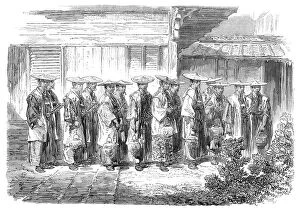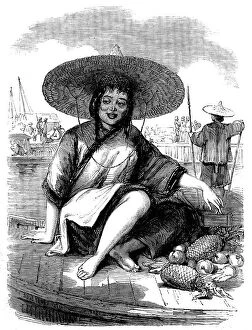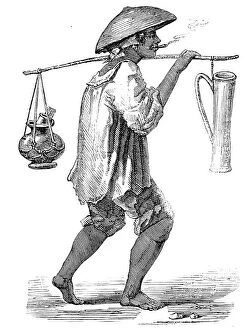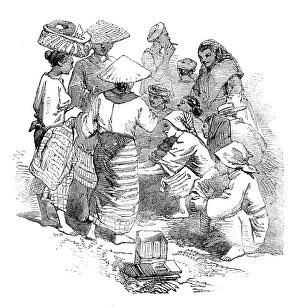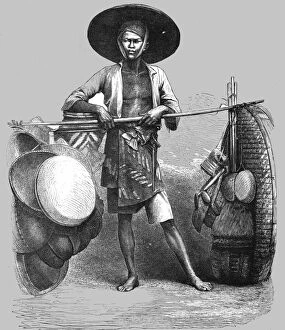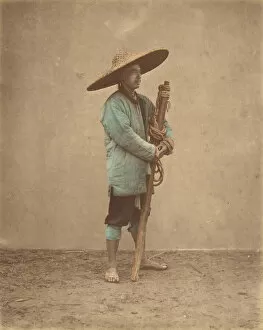Asian Conical Hat Collection
The Asian conical hat, also known as the "coolie hat" or "rice hat, " has been an iconic symbol of various cultures throughout history
For sale as Licensed Images
Choose your image, Select your licence and Download the media
The Asian conical hat, also known as the "coolie hat" or "rice hat, " has been an iconic symbol of various cultures throughout history. Its unique shape and functionality have made it a staple in many Asian countries. In Borneo, the Dyaks of the Tribe of Badjows were often seen donning these hats as they went about their daily activities. A visit to Borneo in 1875 captured this cultural tradition through the lens of A. M. Cameron, showcasing the beauty and diversity of their attire. The conical hat was not only worn for protection from the sun but also served practical purposes. In a street scene depicted by Katsukawa Shuncho in 1789, we see how vendors like basket-sellers used these hats to carry their wares while navigating bustling marketplaces. Throughout Japanese art history, artists like Kogyo Tsukioka and Hokusai immortalized scenes featuring individuals wearing conical hats. From Tori-oi-bune performers to rice field workers planting crops, these artworks depict both traditional customs and everyday life moments. Even beyond Asia's borders, this distinctive headgear found its way into other regions such as China and Cochinchina (now Vietnam). Baron Raimund von Stillfried's photograph showcases a Chinese man proudly sporting his conical hat during the 1870s. Emile Gsell's image captures prisoners being led by a Mata in Cochinchina while wearing similar headwear. The craftsmanship behind these hats is evident in Haritsu Ogawa's Edo period panel from late 17th-mid 18th century Japan. The intricate details highlight the skill required to create such functional yet aesthetically pleasing accessories. From ancient times to modern-day contexts, whether it be for protection from elements or as part of traditional attire, the Asian conical hat remains an enduring symbol that transcends time and borders. It continues to be a testament to the rich cultural heritage and ingenuity of Asian communities.

